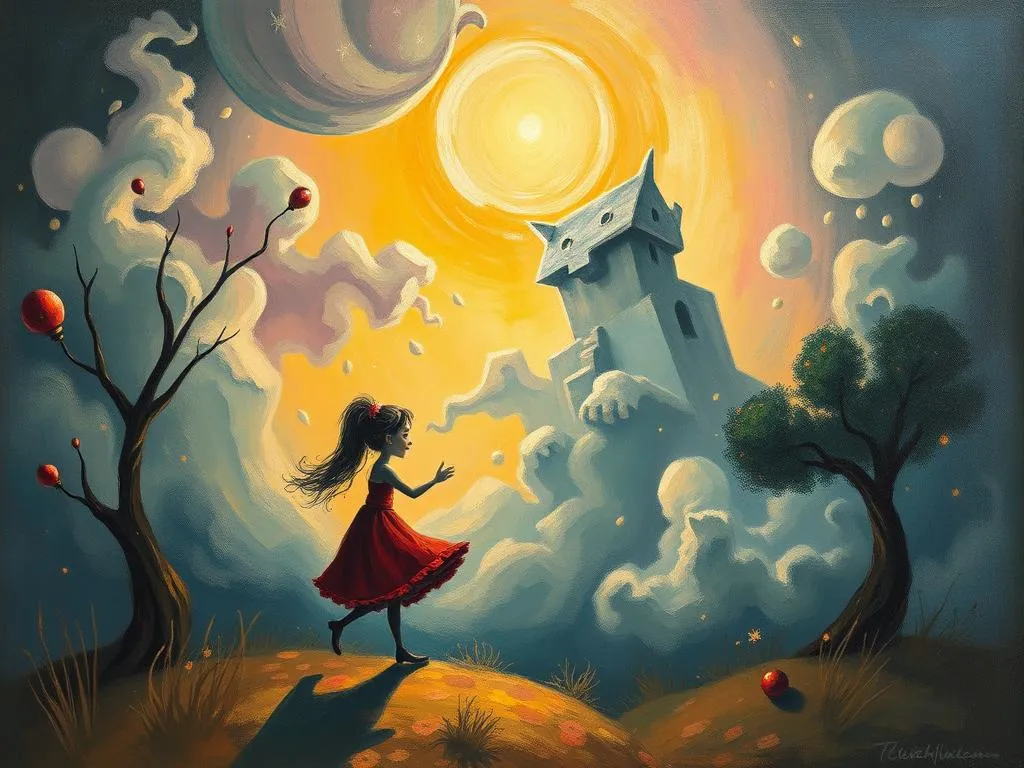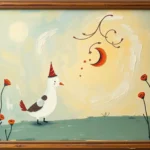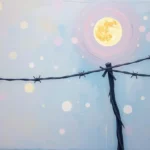
Have you ever woken up in the middle of the night, drenched in sweat, your heart racing, after encountering a dark shadow lurking in the corners of your dreams? These mysterious figures can evoke feelings of fear and anxiety, leaving us puzzled about their significance. But what if I told you that these shadows could offer profound insights into our subconscious, revealing hidden fears, unresolved issues, and even pathways to personal growth?
In this exploration, we’ll journey through the world of dark shadows in dreams, dissecting their symbolism, analyzing various experiences, and uncovering opportunities for transformation. So, whether you find yourself haunted by these elusive figures or merely curious about their meaning, let’s unravel the mystery together.
Shadows of the Mind: Unpacking Symbolism
When we dream of dark shadows, we are often tapping into the depths of our subconscious, where emotions and thoughts reside that we may not confront in our waking lives. Shadows can represent several layers of our psyche, often embodying what we fear, repress, or struggle to acknowledge.
The Shadow Self
Carl Jung, a prominent psychologist, introduced the concept of the Shadow Self, which refers to the parts of ourselves that we suppress or deny. In dreams, these shadows may symbolize aspects of our personalities that we deem unacceptable or undesirable. Encountering such figures can be a call to explore these hidden parts of ourselves. Instead of running from these shadows, embracing them can lead to a deeper understanding of who we are.
Fear and Anxiety
Dark shadows frequently embody our fears, whether they are rational or irrational. They can serve as reminders of unresolved trauma or anxiety that we may not fully comprehend. For instance, if you find yourself pursued by a shadow, it might symbolize your attempts to escape from a troubling situation or emotion in your life. Recognizing these fears is the first step in confronting them, allowing for healing and resolution.
Transformation and Growth
Interestingly, while shadows often evoke fear, they can also represent the potential for transformation and growth. Just as plants grow in the shade, our own personal development can flourish when we confront the darker aspects of ourselves. In this sense, shadows can signify the opportunity to evolve, encouraging us to face our challenges rather than shy away from them.
Cultural Perspectives
Different cultures interpret shadows in unique ways. For example, in some Indigenous cultures, shadows symbolize the spirit or the essence of a person, suggesting a connection to our past or ancestral lineage. In contrast, in certain Eastern philosophies, shadows might represent the duality of existence, illustrating the balance between light and darkness in our lives. These perspectives highlight the richness of dream symbolism and its diverse meanings across cultures.
Chasing Shadows: Dreams with Dark Figures
Let’s delve into some specific scenarios where dark shadows appear in dreams. These narratives can help us relate to our own experiences and illuminate the emotions tied to them.
1. The Pursuing Shadow
Imagine dreaming of a dark shadow relentlessly chasing you through a foggy landscape. No matter how fast you run, it’s always right behind you. This scenario often reflects feelings of being overwhelmed by responsibilities or stress in your waking life. The shadow represents unresolved issues that you may be trying to escape. Instead of fleeing, consider confronting these challenges head-on.
2. The Silent Observer
In another dream, you might find yourself in a room filled with people, yet a dark shadow stands silently in the corner, watching you. This figure can symbolize feelings of isolation or insecurity. Perhaps you feel judged or scrutinized in your social interactions. Acknowledging these feelings can help you build confidence and find your voice in social settings.
3. The Familiar Shadow
Sometimes, the shadow is someone you know—a friend, family member, or colleague. This scenario can represent unresolved conflicts or emotions tied to that relationship. The dream might be prompting you to address these issues openly and honestly. By doing so, you can foster healthier connections and clear the emotional fog that hovers over the relationship.
4. The Shadow Transformation
Imagine a dream where the shadow begins to morph into a more recognizable figure, perhaps a loved one or even yourself. This transformation signifies a merging of your conscious and unconscious selves. It’s an invitation to accept all aspects of yourself, even those you may have previously deemed unworthy. Embracing this journey of self-discovery can lead to profound healing and personal growth.
5. The Shadow in the Mirror
In a more introspective scenario, you might dream of looking into a mirror and seeing a dark shadow behind you. This dream often symbolizes self-reflection and the need to confront your inner thoughts and feelings. The shadow represents the parts of yourself you are not fully aware of. Taking time for introspection and journaling can help you explore these hidden aspects of your psyche.
Illuminating the Path: Embracing Personal Growth
Having explored the symbols and scenarios tied to dark shadows in dreams, it’s essential to recognize the potential for personal growth that lies within these experiences. Here are some practical insights to help you navigate your journey through the shadows:
Acknowledge Your Fears
Instead of avoiding or repressing your fears, take the time to acknowledge them. Write down what the dark shadows in your dreams represent to you. By bringing these fears into the light, you can begin to dismantle their power over you. This process can be liberating, allowing you to regain control over your emotions.
Journaling and Reflection
Engage in journaling to process your dreams and the feelings they evoke. Reflect on the symbols and scenarios that resonate with you, and ask yourself what aspects of your life may connect to these dreams. This practice can offer clarity and insight, guiding you toward understanding and acceptance.
Seek Support
If you find that your dreams are consistently troubling or are tied to deeper emotional issues, consider seeking support from a therapist or counselor. They can provide guidance and tools to help you navigate the complexities of your feelings. It’s okay to ask for help—sometimes, sharing your experiences can lead to profound insight and growth.
Embrace Self-Compassion
Remember to practice self-compassion as you explore the shadows within. It’s essential to be gentle with yourself during this process. Acknowledge that everyone has fears and insecurities, and embracing these aspects of yourself is a crucial step toward healing and personal development.
Transform Your Narrative
Finally, consider how you can transform the narrative of your dreams. Instead of viewing dark shadows as threats, see them as opportunities for growth and self-discovery. Each time you encounter a shadow in your dreams, remind yourself that you have the power to confront and integrate these aspects of yourself, ultimately leading to empowerment.
In conclusion, dark shadows in dreams can be unsettling, but they also hold the potential for profound insight and growth. By understanding their symbolism, analyzing the experiences they represent, and embracing the journey of personal development, we can transform our fears into pathways for healing.
Reflect on this: What shadows are you ready to confront in your own life? Embrace the journey, for it is within the shadows that we often discover our greatest strengths.







